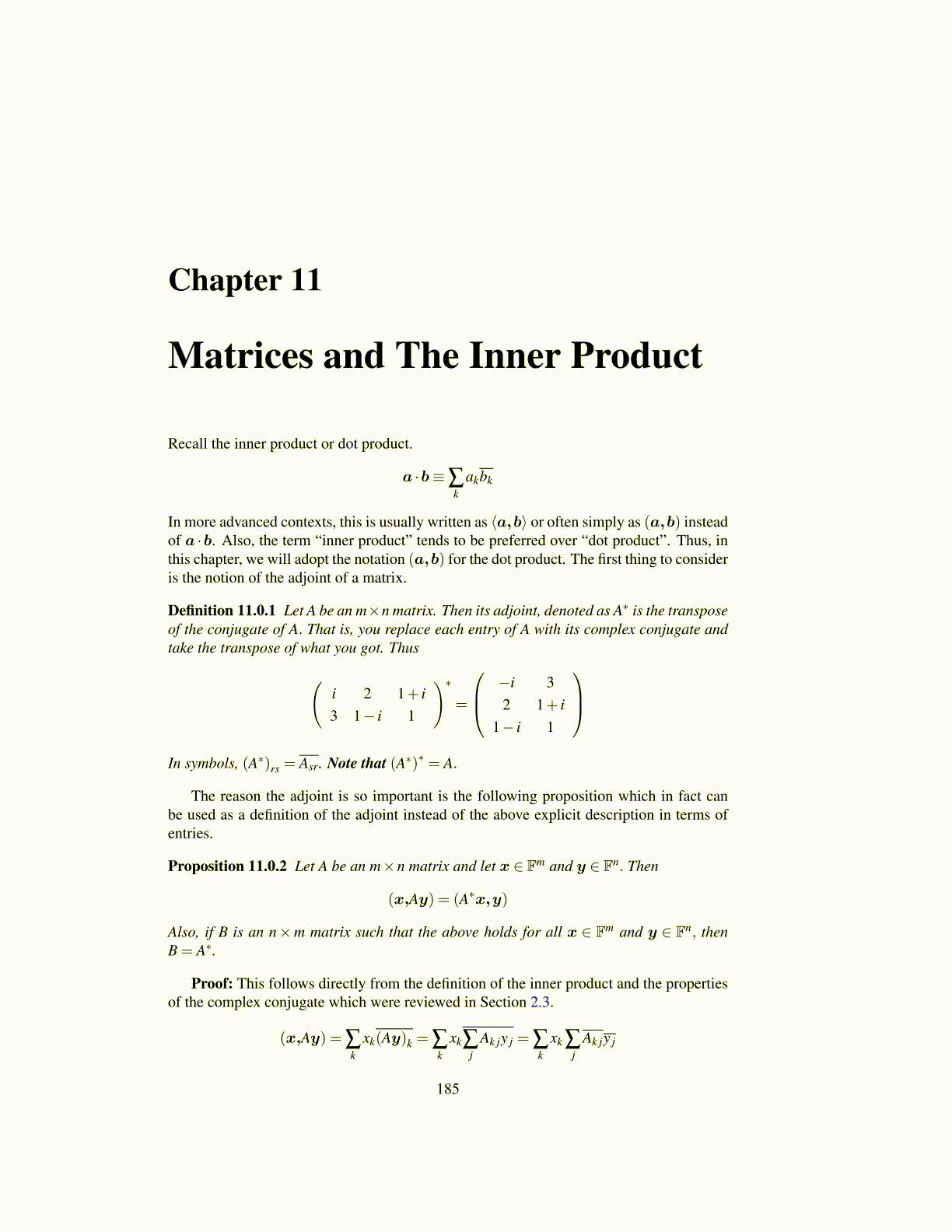
Chapter 11
Matrices and The Inner Product
Recall the inner product or dot product.
a ·b≡∑k
akbk
In more advanced contexts, this is usually written as ⟨a,b⟩ or often simply as (a,b) insteadof a ·b. Also, the term “inner product” tends to be preferred over “dot product”. Thus, inthis chapter, we will adopt the notation (a,b) for the dot product. The first thing to consideris the notion of the adjoint of a matrix.
Definition 11.0.1 Let A be an m×n matrix. Then its adjoint, denoted as A∗ is the transposeof the conjugate of A. That is, you replace each entry of A with its complex conjugate andtake the transpose of what you got. Thus
(i 2 1+ i3 1− i 1
)∗=
−i 32 1+ i
1− i 1
In symbols, (A∗)rs = Asr. Note that (A∗)∗ = A.
The reason the adjoint is so important is the following proposition which in fact canbe used as a definition of the adjoint instead of the above explicit description in terms ofentries.
Proposition 11.0.2 Let A be an m×n matrix and let x ∈ Fm and y ∈ Fn. Then
(x,Ay) = (A∗x,y)
Also, if B is an n×m matrix such that the above holds for all x ∈ Fm and y ∈ Fn, thenB = A∗.
Proof: This follows directly from the definition of the inner product and the propertiesof the complex conjugate which were reviewed in Section 2.3.
(x,Ay) = ∑k
xk(Ay)k = ∑k
xk∑j
Ak jy j = ∑k
xk ∑j
Ak jy j
185